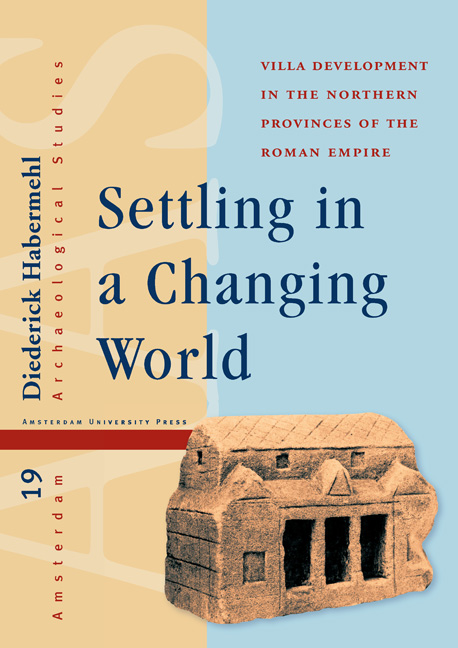Book contents
- Frontmatter
- Dedication
- Contents
- Preface
- 1 Introduction
- 2 Data and Research
- 3 Exploring Villa Development
- 4 Exploring the Social Villa. A Human Approach to Villa Development
- 5 Villa Development and the Organisation of Production
- 6 Settling in a Changing World: A Synthesis
- References
- Appendix 1 Site Catalogue
3 - Exploring Villa Development
Published online by Cambridge University Press: 11 December 2020
- Frontmatter
- Dedication
- Contents
- Preface
- 1 Introduction
- 2 Data and Research
- 3 Exploring Villa Development
- 4 Exploring the Social Villa. A Human Approach to Villa Development
- 5 Villa Development and the Organisation of Production
- 6 Settling in a Changing World: A Synthesis
- References
- Appendix 1 Site Catalogue
Summary
Having explored the frameworks and datasets in previous chapters, I will now focus on the main theme of this study – villa development. Using a great deal of the high-resolution data on rural settlement available, I will attempt to reconstruct long-term development trends as well as short-term transformations on the level of the settlement and associated community. This chapter approaches developments solely from a spatial architectural perspective, focusing on both the organisation of settlement space and house building. The social and economic dimensions of the reconstructed developments will be given little attention here as they are the central themes of chapters 4 and 5 respectively.
As discussed in detail in previous chapters, the approach adopted in this study is a broad, diachronic one, focusing on both long-term and short-term developments. For rural settlements, longer-term developments include trends towards durability, stability, nucleation and structuration. Short-term transformations include the adoption of new materials, building techniques, forms and concepts. In this study I am seeking to explore villa development within the forcefield between continuity and change and therefore between these long-term trends and more rapid transformations of settlement and house construction. The main aim of this chapter is to reconstruct, visualise and analyse settlement and house development trajectories, with the intention of providing additional insight into the complexity of processes of change within the research region.
From an architectural perspective, a ‘villa’ is traditionally viewed as a monumental, Roman-style house, typically characterised by white plastered walls, red tiled roofs and porticoed façades, or, as a settlement with such a monumental house as the main residence. However, a broader approach as outlined in the introduction is needed in order to understand the complex processes involved in villa development. One basic point involves the non-essentialistic approach to the villa concept. I will purposely avoid discussions about detailed definitions of settlements and villas or about the point at which the concept of a ‘true villa’ came into being. Much more importantly, I will focus on significant development trajectories in rural settlements, of which the development of stone-built houses, traditionally referred to as villas, is only a part. Nevertheless, it is neither possible nor desirable to avoid the term villa altogether. In general, I will use the term ‘villa house’ for monumental, multi-roomed houses and ‘villa settlement’ for well-organised and monumentalised settlement compounds.
- Type
- Chapter
- Information
- Settling in a Changing WorldVilla Development in the Northern Provinces of the Roman Empire, pp. 25 - 90Publisher: Amsterdam University PressPrint publication year: 2013



